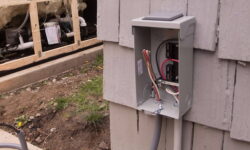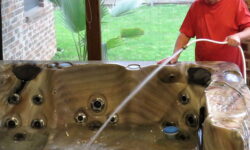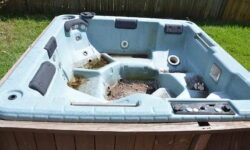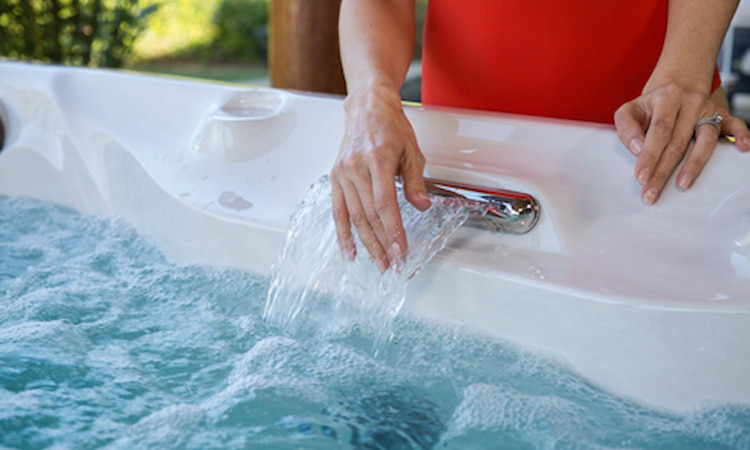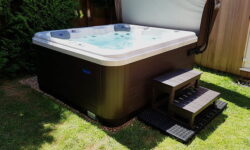You’re about to dive into the nitty-gritty of priming your hot tub pump. Whether you’re dealing with a self-priming model or you’ve got to tackle it manually, we’ve got you covered.
First, turn off the power supply to prevent any electrical accidents. Next, locate the pump and open the air bleeder valve to let out any trapped air. Then, turn the power back on and let the pump run for several minutes. If water starts flowing smoothly, your hot tub pump is primed.
Don’t know what happens if you don’t prime it? We’ll explain that too. It’s simpler than you’d think, and with our detailed guide, you’ll master the process in no time.
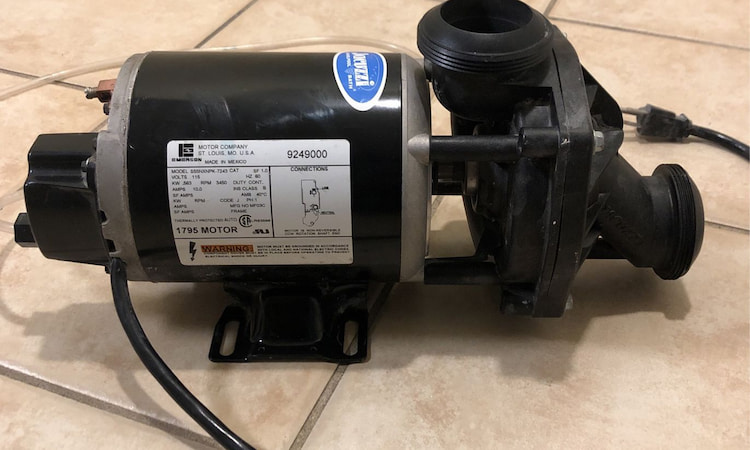
Quick Navigation
Does a Hot Tub Pump Need to be Primed?
Despite what you might think, a hot tub pump indeed needs to be primed to ensure its optimal performance.
It’s not just a matter of turning it on and expecting it to work flawlessly. Priming is a crucial process that helps the pump work effectively by removing airlocks that can hinder its operation.
You may be wondering why it’s so important. Well, if there’s air trapped in your pump, it can cause what’s known as cavitation. This can lead to noisy operation, reduced water flow, and worse, it can even damage your pump over time.
So how do you know if your pump needs priming? If you’ve recently drained or refilled your hot tub, or if you’re experiencing weak jets or a noisy pump, these could be signs that your pump needs priming.
How to Know if a Hot Tub Pump is Self-priming?
Now, you might be wondering if your hot tub’s pump is self-priming. Identifying a self-priming pump isn’t complicated.
There are specific features and operational characteristics that separate these pumps from non-self-priming ones.
To make things clearer, let’s take a look at this table:
| Characteristic | Self-Priming Pump |
|---|---|
| Design | Contains an additional water chamber for priming |
| Functionality | Can draw fluid into the pump without external aid |
| Operation | Starts working automatically after being filled with water |
| Installation | Installed above or below water level |
| Maintenance | Requires less frequent maintenance |
Self-priming pumps have a unique design, featuring an additional water chamber that aids in priming. They can draw fluid into the pump independently, without the need for manual priming.
Once filled with water, these pumps start working automatically. They can be installed either above or below the water level, adding to their versatility.
Lastly, self-priming pumps require less frequent maintenance, making them a convenient choice for many hot tub owners.
How Long Does it Take to Manually Prime a Hot Tub Pump?
If your hot tub pump isn’t self-priming, you’re likely wondering about the time it takes to manually prime it.
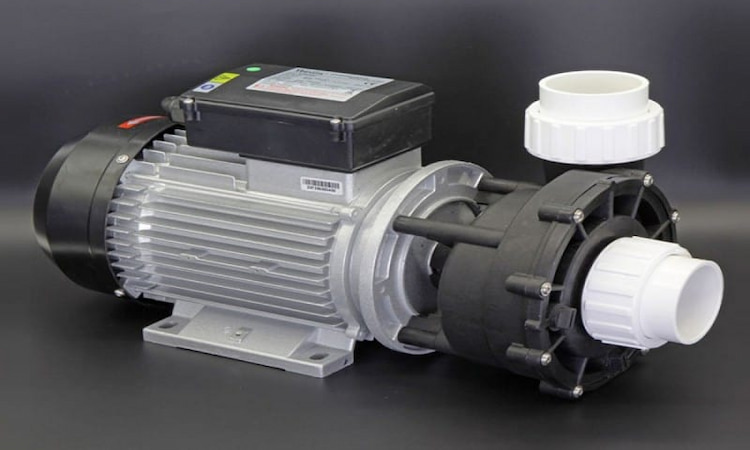
Well, the duration can vary based on a few factors, like pump size, plumbing complexity, and your experience level. But, on average, it should take between 5-15 minutes.
Firstly, the size and power of your pump can significantly impact the priming time. Larger, more powerful pumps usually take less time to prime as they can move water more rapidly through the system. Conversely, smaller pumps take a bit longer.
Secondly, the complexity of your hot tub’s plumbing can also affect the time. If your tub has a more intricate network of pipes and valves, it might take you a bit longer to ensure all air is expelled and water is flowing efficiently.
Lastly, your familiarity with the priming process can also play a role. If it’s your first time priming a pump, you might need a bit more time. But don’t worry, with practice, you’ll get quicker.
Process of Manually Priming a Hot Tub Pump
Moving on from the time it takes, let’s dive right into the step-by-step process of manually priming your hot tub pump.
First, you’ll need to shut off the power to your hot tub to ensure safety. Next, locate the pump, usually found in the equipment area under the spa.
Start by loosening the impeller. This can be done by removing the screws on the pump’s faceplate. This gives you access to the impeller, which you’ll need to spin a few times with your fingers to break any potential air locks.
Once that’s done, you’ll refill the pump with water. You can do this with a garden hose. Be sure to fill it until the water overflows from the pump’s inlet.
After filling the pump, replace the faceplate and tighten the screws. Now, turn the power back on. Your pump should start to operate. However, if it doesn’t, you’ll need to repeat the process.
Lastly, check the pump’s pressure on the gauge. If it’s functioning correctly, the pressure should read between 10 to 20 PSI. If it’s outside this range, you may need to call a professional.
Maintaining Your Primed Pump
Once you’ve successfully primed your hot tub pump and addressed any initial problems, it’s crucial to keep it in good working order.
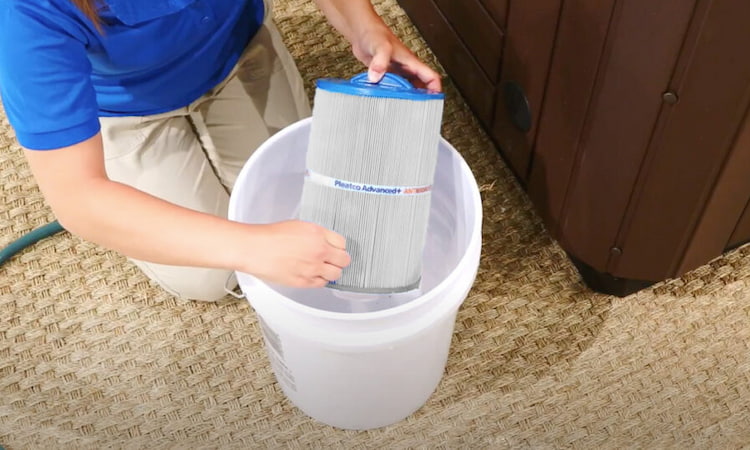
Regular maintenance ensures the longevity of your pump and reduces the likelihood of future issues.
Here are four essential steps to keep your pump running smoothly:
- Clean the Filter Regularly: Debris can clog the filter and impede the pump’s performance. Remove and clean the filter every two to four weeks, depending on use.
- Check the Water Chemistry: Maintain balanced water chemistry. Regularly test and adjust the pH, total alkalinity, and sanitizer levels. Imbalanced water can cause damage to the pump.
- Inspect the Pump: Regularly examine the pump for signs of wear and tear. Look for leaks, strange noises, or reduced water flow. These could indicate potential issues that need attention.
- Schedule Professional Inspection: Even with diligent upkeep, it’s beneficial to have a professional inspect the pump
Related Read: Should My Inflatable Hot Tub Pump Run All the Time?
What Happens if a Hot Tub Pump is Not Primed?
Without proper priming, your hot tub pump can suffer significant damage, potentially shortening its lifespan considerably.
When your pump isn’t primed, it runs dry, which leads to overheating and, eventually, failure. The seals can crack, and the impeller, the part that moves the water, can break.
Here’s a quick look at what happens if your pump isn’t primed:
| Problem | Cause | Effect |
|---|---|---|
| Overheating | Dry running | Pump failure |
| Seal cracks | Overheating | Leaks |
| Impeller breakage | Overheating | Reduced water flow |
| Increased electricity use | Pump working harder | Higher energy bills |
| Shortened lifespan | All the above | More frequent replacements |
Repairing or replacing a pump isn’t just inconvenient, it’s also costly. The increased electricity use from a pump working harder than it should also adds to your energy bills.
Frequently Asked Questions
No, you can’t use your hot tub while the pump is being primed. It’s crucial for the pump to fully prime to ensure correct water flow and heating. Interruptions can cause significant issues.
You’ll notice signs of a malfunctioning hot tub pump if you hear unusual noises, experience decreased water flow, or see leakage around the pump. Your tub’s temperature might also struggle to maintain heat.
No specific tool’s needed to prime your hot tub pump. You’ll just need access to the pump and some patience. It’s a process of allowing water to flow freely through the pump system.
You don’t need to prime your hot tub pump regularly. It’s typically done only when you refill the tub or if there’s an issue with water flow. Always refer to your manual for specific model guidelines.
If you incorrectly prime your hot tub pump, you’re risking damage to the pump’s motor. You could also experience poor water circulation, overheating issues, and ultimately, a breakdown of your hot tub system.
Conclusion
In conclusion, priming your hot tub pump is crucial for its efficient functioning. Whether your pump is self-priming or requires manual priming, knowing how to do it can save you a lot of trouble.
Not priming can lead to pump failures and costly repairs. With a little time and patience, you can easily prime your pump and keep your hot tub running smoothly.

